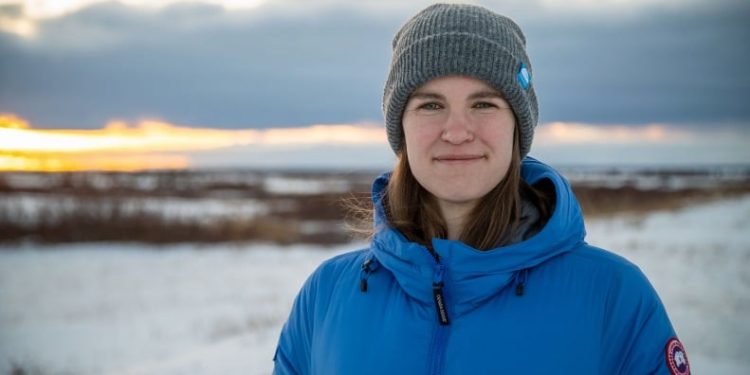A revolutionary study of the University of Toronto Scarborough revealed a direct link between Distribute caused by climate change and the alarming decline of the population of polar bear In Western Hudson Bay. Research provides a clear mechanism explaining how the reduction in sea ice hunting opportunities leads to energy deficitsreduction in reproduction, and ultimately, the collapse of this emblematic Arctic species.
A narrowed habitat
Polar bears are counting on sea ice As a platform for seal hunting, their main source of food. However, as global temperatures are increasing, Arctic Sea Ice melts at an unprecedented rate. In the western Hudson bay – one of the most studied polar bear populations – this loss of habitat has led to a drop of almost 50% of the population in the past four decades (1979- 2021).
The study, published in the journal Scienceattributes this decline to incapacity Energy needs Due to shorter hunting seasons. “A loss of sea ice means that bears spend less time chasing seals and more time fasting on earth,” explains Louise Archer, a postdoctoral researcher at U of T Scarborough and the main study of the study. “This negatively affects bears” energy balanceleading to a reduction in reproduction, to the survival of CUB and, finally, to the population. »»


A bioenergetic model follows energy deficits
To better understand the relationship between the loss of sea ice and the survival of polar bears, the researchers have developed a “bioenergetic model“This follows the energy dynamics of individual polar bears throughout their lifespan – from adult bears. This innovative approach compares the results modeled with four decades of real world surveillance data, revealing an almost perfect correspondence.
“What is unique in our model is that it does not only show a correlation between the loss of sea ice and the decline of the population – this explains how These changes occur, ”explains Péter Molnár, an associate professor of the Department of Biological Sciences of the U Scarborough and co-author of the study. “When we execute the figures, we get an individual match to see in real life.”
The model shows that when polar bears spend more time on earth, they burn their fat reserves more quickly, leaving Insufficient energy for growthCUB reproduction and breeding. Over time, it leads to smaller body sizes, less cubs and lower survival rates.
The cubs are faced with the weight of the crisis
Polar young are particularly vulnerable to the impacts of climate change. Surveillance data reveal that Adult female body mass fell 39 kg (86 lb)while One year old cubs to have Lost 26 kg (47 lb) on 37 years old. Mothers struggling with nutritional stress produce less milk, endangering Cub’s survival during critical fasting periods. In addition, litter sizes have decreased by 11% and mothers manage their cubs because they are not strong enough to live independently.
“The survival of bearers has a direct impact on the survival of the population,” said Archer. “If the cubs do not survive, the population cannot maintain themselves.”


A warning for polar bears in the world
Western Hudson Bay is considered a bell tower for polar bear populations in the world. As one of the most southern groups of polar bear, this population has been closely monitored for decades, providing a multitude of data to clarify predictions on other regions. With Warming of the Arctic At a rate four times faster than the global average, researchers warn that similar declines probably occur – or will soon occur – in other polar bear populations.
“It’s not just a problem for Western Hudson Bay; It is an overview of the future for polar bears everywhere, ”explains Molnár. “Based on the trajectories planned for loss of sea ice, this model essentially describes their fate if we do not act.”
Wider implications for conservation and climate action
The study highlights the urgent need for global efforts to approach greenhouse gas emissions. Although the protection of polar bears requires the safeguarding of their arctic habitats, the deep cause of their fate lies in greenhouse gas emissions induced by humans leading to warming the Arctic. Without a significant reduction in carbon emissions, long -term survival of polar bears – and countless other species – is at risk.
“This research provides a powerful tool to understand the impacts of climate change on wildlife,” notes Archer. “But it also serves as an appeal to action. We have the knowledge necessary to predict these results, but now we need the desire to prevent them. »»
An alarm clock to humanity
The fate of polar bears in the west of Hudson bay is more than an environmental tragedy – it is a brutal reminder of the interconnection of ecosystems and cascading effects of climate change. As apex predators, polar bears play a crucial role in maintaining the balance of the Arctic ecosystem. Their decline indicates wider ecological disturbances which could have deep consequences.
By highlighting the mechanisms stimulating the drop in the population of polar bear, this study strengthens the importance of addressing carbon emissions head -on. For polar bears – and for humanity – the time to act is now.
Source: Materials provided by University of Toronto. Original written by Don Campbell. Note: The content can be modified for style and length.
Do you have a reaction? Share your thoughts in the comments
Have you enjoyed this article? Subscribe to our free newsletter to start stories, exclusive content and the latest news.


